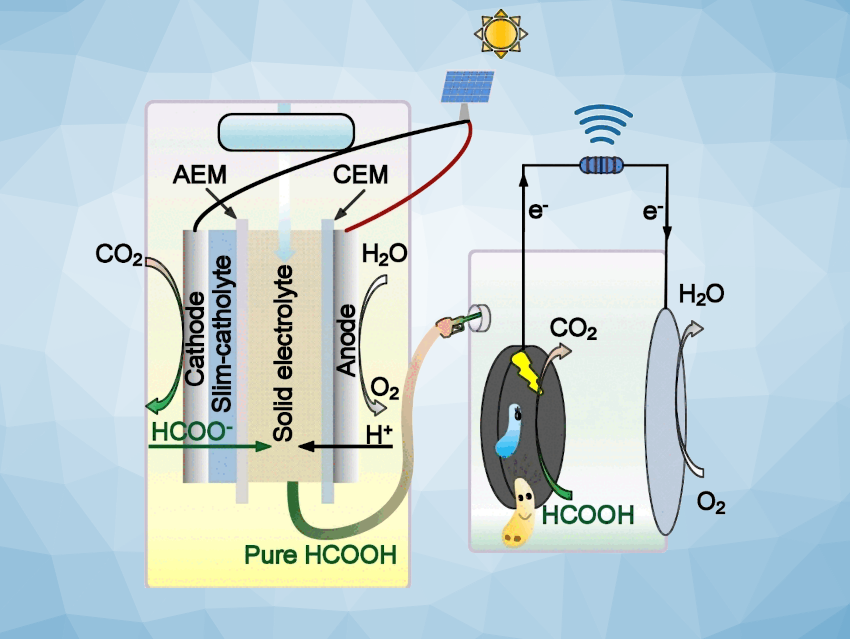Formic acid, which can be produced electrochemically from carbon dioxide, is a promising energy carrier. Yong Jiang, Fujian Agriculture and Forestry University, Fuzhou, China, and colleagues have developed a fast-charging hybrid battery system that combines the electrochemical generation of formic acid as an energy carrier with a microbial fuel cell. This fast-charging biohybrid battery system could be used to monitor the toxicity of drinking water—one of many potential applications.
Microbial Fuel Cells (MFCs)
Microbial fuel cells use bacteria to generate electricity, exploiting the ability of some bacterial species to convert energy-rich molecules into electrical energy. The devices harness the electrons derived from reactions catalyzed by the bacteria, diverting electrons produced via the microbial oxidation of a fuel on one electrode to an oxidizing agent on the other electrode through an external electrical circuit to produce electricity.
In fully microbial batteries, bacteria also produce the energy carrier molecules during the charging process, which are then used to generate electricity during the discharging process. However, one of the disadvantages of fully microbial batteries is that charging is still rather inefficient and slow.
Coupling MFCs with Electrochemical Formate Production
By coupling the purely inorganic electrochemical generation of a biologically active molecule with a microbial fuel cell, the team, for the first time, developed a two-stage hybrid microbial battery system that overcomes many of the challenges faced by fully microbial batteries.
The team aimed to produce a biohybrid battery using simple and inexpensive components to provide sustainable energy. They found that formic acid is a sustainable biological energy carrier because it can be produced either biologically or electrocatalytically from carbon dioxide and is then available for consumption by the bacteria in the microbial fuel cell. Formate can be used by electrochemically active bacteria such as Geobacter sulfurreducens, for example, for bioelectricity generation.
Fast Charging, Long Discharging
Using commercially available components, the team designed a CO2 electrolyzer that converts carbon dioxide gas into formic acid. Using this design, the researchers found that the charging process takes place within a few minutes. Once formic acid has been produced and extracted from the electrolyte, it is fed into a second device—the microbial fuel cell—where bacteria slowly convert it into carbon dioxide and electricity at the bioanode.
This two-stage system produced enough current for 25 h of discharge, a value that is useful in many applications. As a proof of concept, the team used the discharge current produced to monitor water for toxins and found that the current signal changed when environmental toxins such as formaldehyde and copper were added to the water. The team suggests further possible applications in sustainable wastewater treatment or desalination.
- Super‐Fast Charging Biohybrid Batteries through a Power‐to‐Formate‐to‐Bioelectricity Process by Combining Microbial Electrochemistry and CO2 Electrolysis,
Na Chu, Yong Jiang, Donglin Wang, Daping Li, Raymond Jianxiong Zeng,
Angew. Chem. Int. Ed. 2023.
https://doi.org/10.1002/anie.202312147



